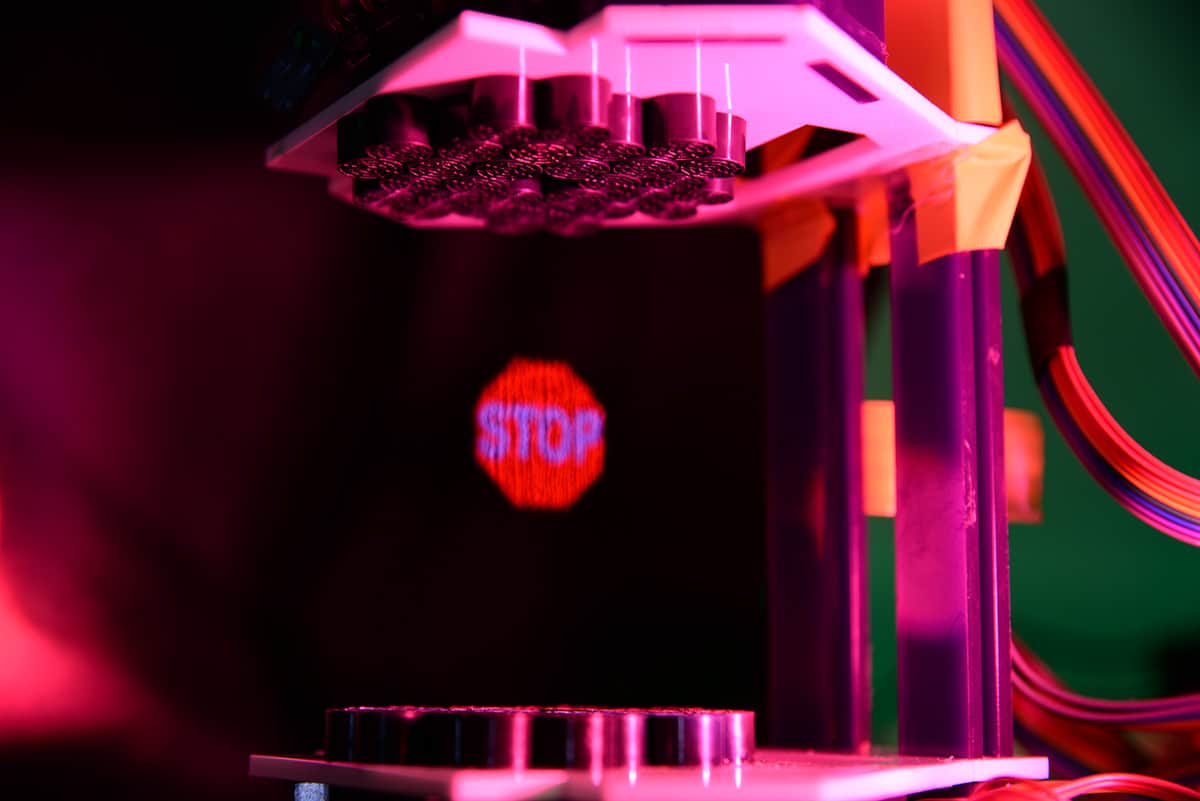Techniques that can measure the strength of these atomic bonds and vdW forces in a non-destructive way are, however, lacking. This restricts scientists’ ability to explore various unusual phenomena (such as capillary condensation, the quantum anomalous Hall effect and even room-temperature superconductivity in monolayer sheets) that make 2D materials so promising for next-generation electronics. What is more, previous measurement efforts have produced conflicting results.
Technique similar to medical ultrasound
Researchers at the University of Nottingham and Loughborough University have now developed a technique that uses fast laser pulses to generate and detect tiny, transient strains in the crystalline lattice of indium selenide (In2Se3). This unique approach, backed by theoretical analyses by Alexander Balanov and Mark Greenaway at Loughborough, makes it possible to measure both the strong covalent bonds and weak vdW forces in the different phases of In2Se3 without damaging the material, says team member Wenjing Yan, a physicist at Nottingham.
Yan goes on to explain that the technique works in a similar way to medical ultrasound, but at a much higher, sub-terahertz, frequency. It involves sending a “pump” laser pulse just 120 femtoseconds long into flakes of In2Se3 to generate coherent phonons (quantized sound waves) that then travel through the material, interacting with its atomic bonds. The properties of these phonons reveal information about the strength of the atomic bonds, and they are measured by a second “probe” laser pulse with picosecond time resolution.
The technique is non-invasive because the laser pulses merely deform the crystal slightly, rather than destroying it. Indeed, the system may be considered as a sequence of springs: by knowing the speed of sound from measurements and how these springs respond to the deformation, the researchers can extract the relative strength of the covalent forces between the atoms and the vdW forces between the layers. “If we apply so-called density function theory with the help of high-performance computers, we can numerically estimate these forces for different stacking configurations and suggest how to tune the elastic, electric and even chemical properties of different polymorphs of vdW materials,” Greenaway explains.
Different phases, different properties
The researchers chose to study In2Se3 because it has a range of technological applications, including solar cells, photodiodes, ferroelectric field-effect transistors, and non-volatile memory elements. It also exists in several phases, denoted α, β, β′, γ and δ, each with a different crystalline structure.

Making images with sound
The α- and β-In2Se3 phases are particularly interesting for materials designers. The α-phase is ferroelectric, with different ferroelectric properties for its hexagonal (2H) and rhombohedral (3R) arrangements in which the individual (quintuple) layers are stacked in an AB and ABC arrangement, respectively. In contrast, β-In2Se3(3R), which forms when α-In2Se3 is annealed, is not ferroelectric, and behaves as a superconductor at high pressures.
The researchers, who report their work in Advanced Functional Materials, found that sound waves travel at very different speeds in these different phases. Yan compares the team’s findings to the differences between pancakes and Yorkshire pudding. “Both foods are made from the same mixture: egg, flour and milk, but their different cooking processes give them different structures and properties,” she explains. “Although this is obvious in the macroscopic world, finding such differences in nanostructured materials due to subtle differences in vdW forces is surprising and exciting.”

